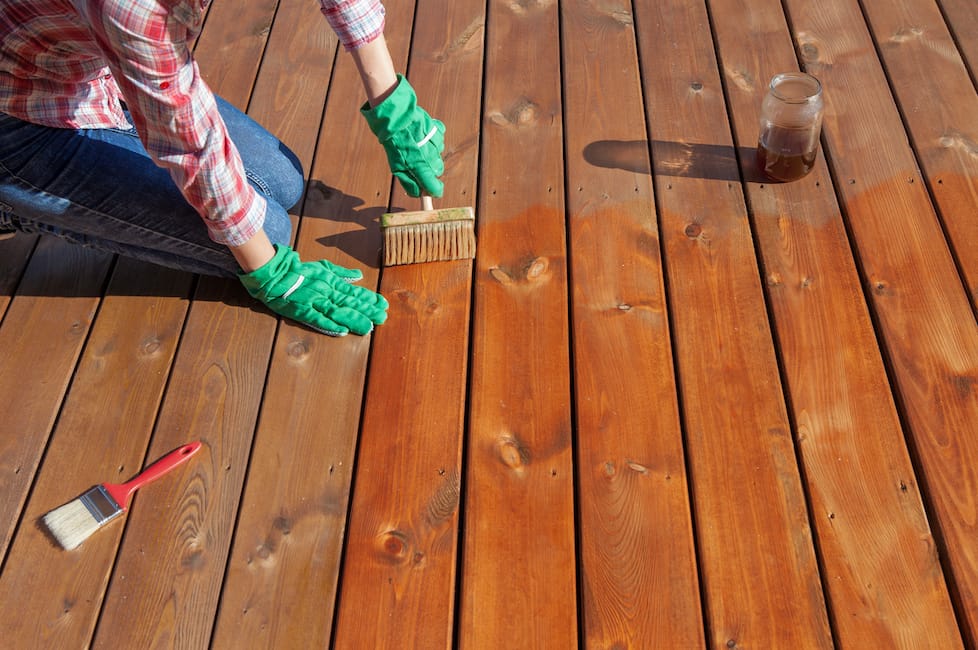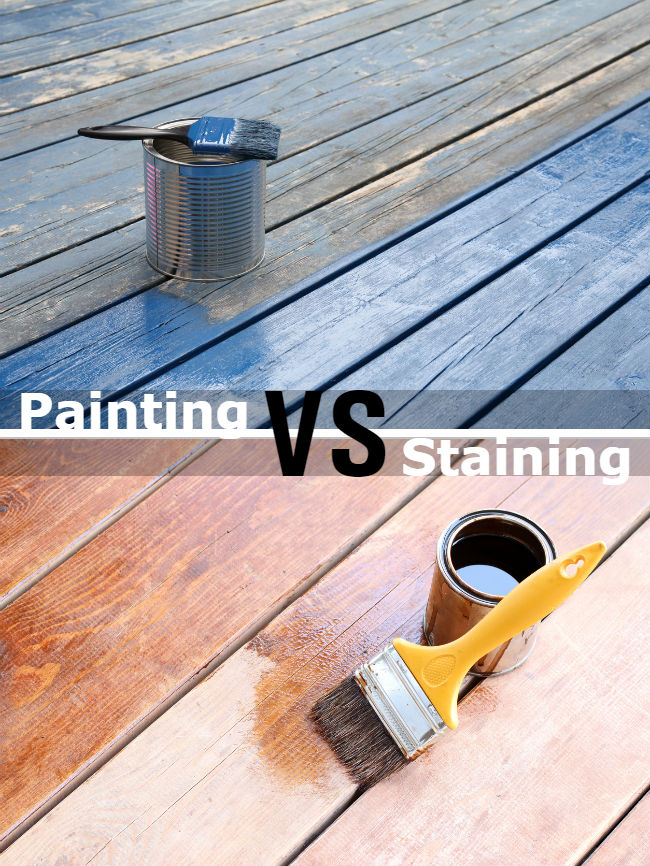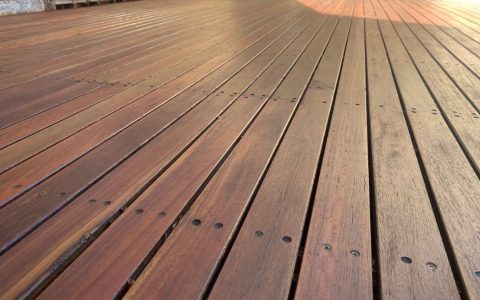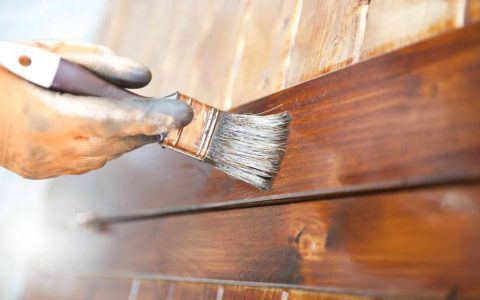Choosing between paint and stain for your deck involves considering aesthetics, protection, maintenance, and the condition of your wood. Both options offer distinct advantages and disadvantages.
Deck Paint
Paint forms a thick, opaque film on the surface of the wood. It offers the widest range of color choices and can effectively hide imperfections in older or lower-grade wood.
Pros:

- Color Variety: Virtually unlimited color options, allowing for complete customization.
- Hides Imperfections: Excellent for covering flaws, discoloration, or previous finishes on the wood.
- Surface Protection: Forms a robust barrier against moisture, UV rays, and foot traffic, offering good protection against rot and insect damage when properly applied.
- Longevity (Initial): A well-applied paint job can last for several years before needing significant attention, though touch-ups may be required.
Cons:
- Hides Wood Grain: Completely obscures the natural beauty and texture of the wood.
- Prone to Peeling/Chipping: As wood expands and contracts, paint can crack, peel, or chip, especially in areas with high moisture or temperature fluctuations. This requires scraping and repainting.
- Traps Moisture: If moisture gets behind the paint film (e.g., through cracks or from underneath), it can be trapped, potentially leading to rot and decay.
- More Labor-Intensive to Re-do: Removing old, peeling paint for a fresh coat is a significant undertaking.
Deck Stain
Stain penetrates the wood fibers, coloring them while often allowing the natural grain and texture to show through. Stains come in various opacities, from transparent to semi-transparent, semi-solid, and solid (which looks similar to paint but is thinner).
Pros:
- Enhances Wood Grain: Transparent and semi-transparent stains highlight the natural beauty of the wood.
- Penetrates Wood: Soaks into the wood rather than forming a surface film, making it less prone to chipping or peeling like paint.
- Allows Wood to Breathe: Less likely to trap moisture, which can help prevent rot.
- Easier Reapplication: Typically, re-staining involves cleaning the deck and applying a new coat, without extensive scraping.
Cons:
- Fewer Color Options: Especially for transparent and semi-transparent types, color choices are more limited and often earth-toned. Solid stains offer more variety.
- Less Surface Protection (for transparent/semi-transparent): Offers less protection against wear and tear compared to paint. Solid stains offer protection closer to paint.
- Shows Imperfections: Transparent and semi-transparent stains will not hide significant flaws in the wood.
- More Frequent Reapplication (for some types): Transparent and semi-transparent stains often require reapplication every 1-3 years to maintain color and protection, depending on exposure. Solid stains last longer.
Key Considerations for Your Choice
- Wood Condition: For new, high-quality wood where you want to showcase the grain, stain is often preferred. For older, weathered wood with imperfections, paint or a solid stain can provide a refreshed look and better coverage.
- Desired Look: If you want a specific, bold color or a uniform appearance, paint or solid stain is suitable. If you appreciate the natural look of wood, a transparent or semi-transparent stain is ideal.
- Maintenance Tolerance: Paint may last longer initially but can be more problematic when it fails. Stain (especially transparent/semi-transparent) requires more frequent maintenance coats but the process is generally simpler.
- Previous Finish: If the deck is already painted, repainting is usually the easiest option unless you're prepared for the significant effort of stripping all paint. If stained, you can usually re-stain, potentially changing the color or opacity.
Ultimately, the "best" choice depends on your specific deck, your aesthetic preferences, and the level of maintenance you're willing to undertake.









